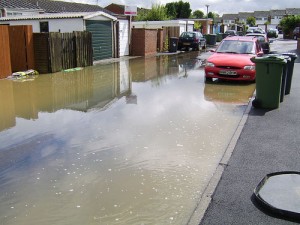
Photo credit: Gavin Stewart
Over recent weeks, severe storms and flooding have affected many parts of the UK. High winds and torrential rain have left many roads impassable and many people have been forced to leave their homes.
Driving in rainy and flood conditions is extremely difficult. Institute of Advanced Motorists chief examiner Peter Rodger says: “A suddenly very wet road surface increases the chances of slipping when braking or steering, which is a problem not just for motorists, but cyclists and motorcyclists too.”
To help you, we’ve put together a guide for car leasing and contract hire drivers designed to keep safe in bad weather. Keep reading to find out more…
1. Set your car’s controls before you set off
Before you set off, it is advisable to set your heater controls. In bad weather you need to keep all your concentration on the road and so you should set your controls to avoid the windscreen misting up.
If your car has cruise control you should avoid using it on wet roads. You need to be able to control your speed and change it gently.
2. Make sure you can be seen
In heavy rain or wet conditions, put your lights on. Generally, you should turn your dipped headlights on whenever you need to use your wipers. And, before overtaking, put your wipers on their fastest setting. Many cars now have automatic rain-activated wipers and lights, which help you to concentrate on your driving.
3. Give yourself time and space
It’s important to keep your attention on the road ahead. Always plan your driving so that you can brake, accelerate and steer smoothly as harsh manoeuvres will unbalance the car.
Mr Rodger, the driving expert, says: “When driving in wet conditions remember that stopping distances will increase, and visibility will be reduced. Drop your speed and give yourself more time to slow down.”
4. Slow down
One of the most important rules when driving in tough conditions is to slow down. In the rain, stopping distance is at least doubled. Giving yourself more space also helps you to avoid heavy spray from the vehicle in front, especially if it is a lorry or bus.
If you have to drive through water it is important that you take extra care. Peugeot Technical Operations Manager, Ian Sedgwick, says: “Enter the water at no more than 4 or 5mph. First gear tickover may be faster than this so you need to slip the clutch in order not to go too quickly. Keeping the engine revving prevents water entering via the exhaust pipe.
“You need to push the water aside, creating a depression in front of your car to prevent the engine sucking in water through its air intake. The faster you go the more the water is disturbed and the more likely it is to flood your engine.”
5. Keep your foot on the accelerator in deep water
If you have to drive through water, you should drive slowly and keep going once you have started. In a manual car, keep the revs high by ‘slipping the clutch’ (which means the clutch is not fully engaged) all the time you are in the water
In deep water, never take your foot off the accelerator, as this could allow water to travel up the exhaust pipe
Once you’re out of the water, dry the brakes before you need them. The best way to remove excess water from the pads is to lightly apply the brake as you drive along for a few seconds, after checking nothing is following you too closely.
If your engine sounds odd when you emerge you may have some water in the system. Mr Sedgwick from Peugeot says: “Driving a misfiring car could cause more damage. Stop immediately and seek expert advice.”
